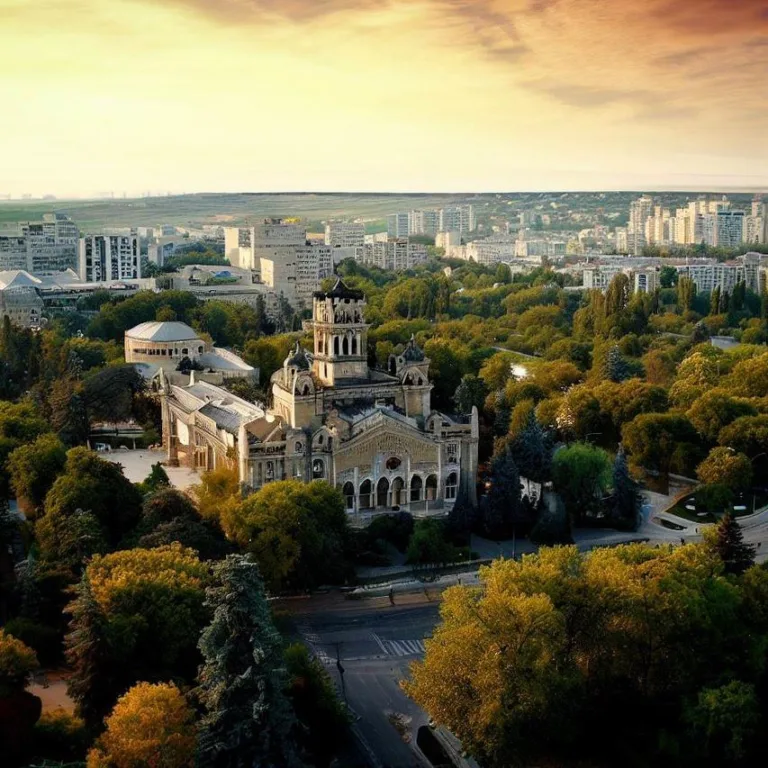Welcome to our comprehensive guide to Kišiněv, the captivating capital city of Moldova. Nestled in the heart of Eastern Europe, Kišiněv boasts a rich history, diverse culture, and a blend of architectural styles that reflect its complex past. In this article, we’ll take you on a virtual tour of this enchanting city, exploring its landmarks, culture, and hidden gems. Join us as we delve into the allure of Kišiněv.
The historical tapestry of kišiněv
Kišiněv, also known as Chișinău, holds a storied past that weaves together influences from various civilizations. Its history dates back to the early 15th century when it was a small settlement. Over the centuries, Kišiněv witnessed Ottoman and Russian rule, each leaving its imprint on the city’s architecture and culture.
The city’s historical significance is embodied in its architecture. Striking landmarks such as the Nativity Cathedral and the Triumphal Arch pay homage to different eras. The Nativity Cathedral, with its ornate design, is a prime example of Russian Orthodox architecture, while the Triumphal Arch stands as a symbol of victory over Ottoman forces.
Cultural melting pot
Kišiněv’s charm lies in its cultural diversity, stemming from its history as a crossroads of civilizations. The city is a melting pot of cultures, languages, and traditions. Moldovan, Russian, Ukrainian, and Gagauzian influences blend harmoniously, creating a unique cultural tapestry.
The city’s cultural scene is vibrant and multifaceted. Museums like the National Museum of History captivate visitors with artifacts that narrate the city’s evolution. The Pushkin Museum, dedicated to the famous Russian poet, showcases the deep literary ties between Russia and Moldova.
Architectural marvels
Kišiněv’s architecture is a captivating fusion of styles that mirror its historical journey. Walking through the streets, you’ll encounter neoclassical, art nouveau, and Soviet-era buildings. The Central Market, with its striking green dome, is a testament to the city’s architectural diversity.
Stefan cel Mare Park, named after a revered Moldovan ruler, provides a lush oasis amidst the urban landscape. The park’s centerpiece is the Stefan cel Mare Monument, an imposing statue paying homage to the national hero.
Exploring the Culinary Delights
No exploration of Kišiněv is complete without savoring its culinary treasures. Moldovan cuisine is a blend of influences, resulting in a delectable array of dishes. From hearty mămăligă (cornmeal porridge) to succulent mămăligă cu brânză (polenta with cheese), every bite tells a tale of tradition.
Wash down these delights with a glass of locally produced Moldovan wine. The region’s winemaking heritage dates back millennia, and wine enthusiasts will find themselves in paradise at the Mileștii Mici wine cellars, home to one of the world’s largest wine collections.
Frequently Asked Questions
Q: What is the best time to visit Kišiněv?
A: The ideal time to visit Kišiněv is during the spring (April to June) and early autumn (September to October) when the weather is pleasant, and outdoor activities are enjoyable.
Q: How can I get around the city?
A: Kišiněv has an efficient public transportation system, including buses, trolleys, and minibusses. Taxis and ride-sharing services are also readily available.
Q: Are English and Russian widely spoken?
A: While Moldovan is the official language, both English and Russian are commonly spoken, especially in tourist areas, hotels, and restaurants.
A: Don’t miss the Dendrarium Park, a lush haven for nature lovers, and the Capitoline Wolf statue, a gift from Rome symbolizing the city’s ancient roots.
Q: Is Kišiněv a safe city for travelers?
A: Kišiněv is generally safe for travelers. However, it’s advisable to take standard precautions such as safeguarding belongings and avoiding poorly lit areas at night.
Explore Kišiněv with an open heart and an appetite for discovery. This city’s blend of history, culture, and culinary delights will leave an indelible mark on your travel memories. Experience the magic of Kišiněv!
Viz také:






